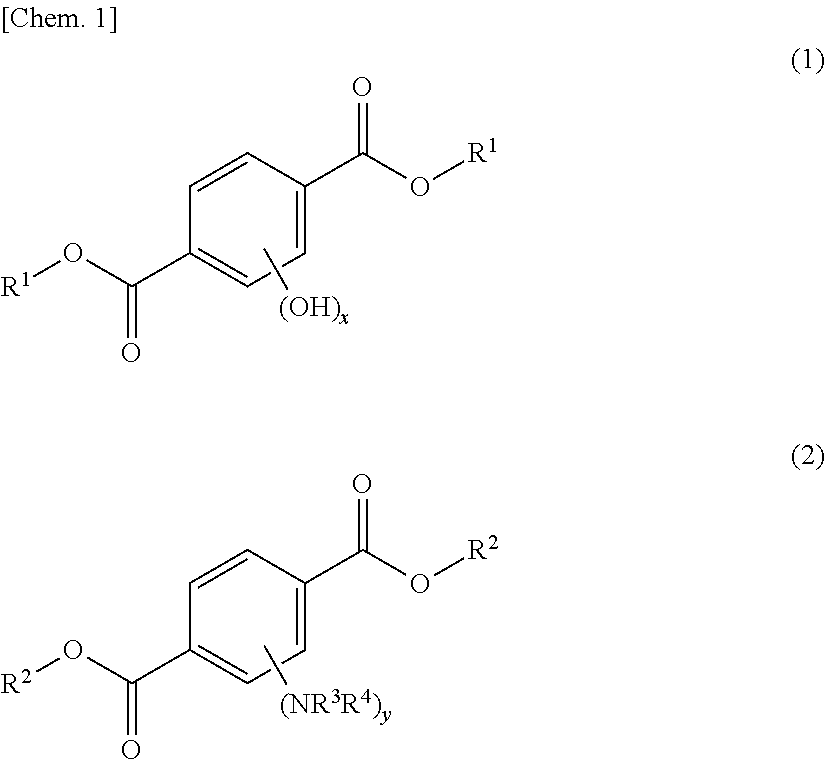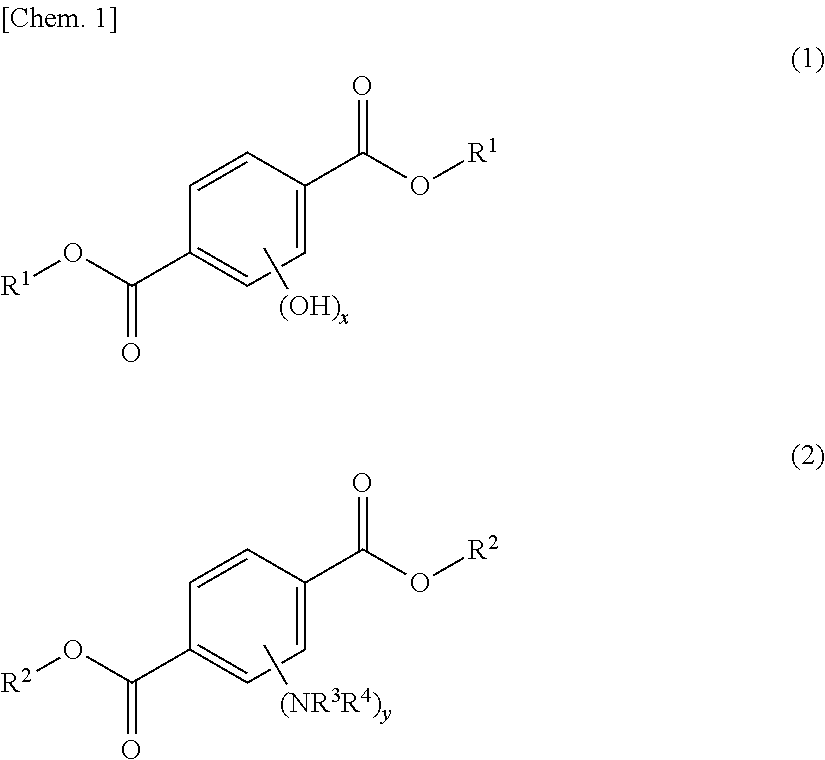Intermediate film for laminated glass, and laminated glass
a technology of laminated glass and intermediate film, which is applied in the field of intermediate film for laminated glass and laminated glass, can solve the problems of interlayer color change, not the entire surface of laminated glass is free from double meter image problem, etc., and achieve the effect of less susceptible to color change and high contrast imag
- Summary
- Abstract
- Description
- Claims
- Application Information
AI Technical Summary
Benefits of technology
Problems solved by technology
Method used
Image
Examples
example 1
(1) Resin Composition for Light Emitting Layer
[0079]A light-emissive plasticizer solution was prepared by mixing 1.5 parts by weight of diethyl-2,5-dihydroxy terephthalate (“diethyl-2,5-dihydroxyterephthalate” from Aldrich), which corresponds to the compound having a structure represented by the formula (1), as the light emitting material having a terephthalic acid ester structure with 60 parts by weight of triethyleneglycol di-2-ethylhexanoate (3GO). The entire amount of the plasticizer solution was combined with 100 parts by weight of polyvinyl butyral (acetyl group content: 13 mol %, hydroxyl group content: 22 mol %, degree of butyralization: 65 mol %) obtained by acetalization of a polyvinyl alcohol (degree of polymerization: 2300) with n-butylaldehyde. The resulting mixture was sufficiently kneaded with mixing rolls. In this manner, a resin composition for the light emitting layer was prepared.
(2) Resin Composition for First and Second Resin Layers
[0080]A plasticizer solution w...
example 2
[0083]An interlayer film for laminated glass and a laminated glass were obtained in the same manner as in Example 1, except that 1.5 parts by weight of diethyl-2,5-diamino terephthalate (from Aldrich), which corresponds to the compound having a structure represented by the formula (2), was used as the light emitting material having a terephthalic acid ester structure instead of 1.5 parts by weight of diethyl-2,5-dihydroxyterephthalate (“diethyl-2,5-dihydroxyterephthalate” from Aldrich), which corresponds to the compound having a structure represented by the formula (1).
PUM
| Property | Measurement | Unit |
|---|---|---|
| thickness | aaaaa | aaaaa |
| thickness | aaaaa | aaaaa |
| thickness | aaaaa | aaaaa |
Abstract
Description
Claims
Application Information
 Login to View More
Login to View More - R&D
- Intellectual Property
- Life Sciences
- Materials
- Tech Scout
- Unparalleled Data Quality
- Higher Quality Content
- 60% Fewer Hallucinations
Browse by: Latest US Patents, China's latest patents, Technical Efficacy Thesaurus, Application Domain, Technology Topic, Popular Technical Reports.
© 2025 PatSnap. All rights reserved.Legal|Privacy policy|Modern Slavery Act Transparency Statement|Sitemap|About US| Contact US: help@patsnap.com


